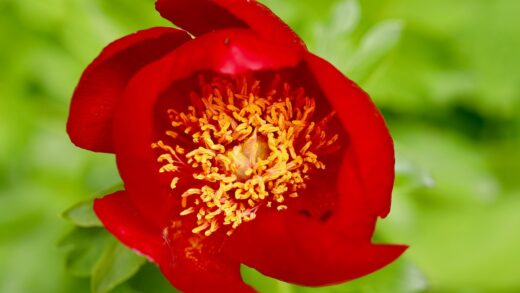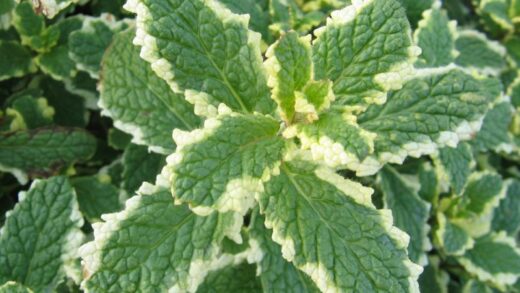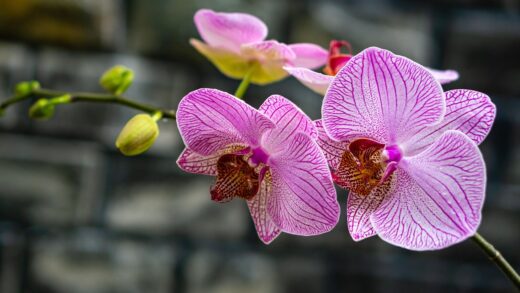Despite its hardy and resilient nature, purpletop vervain is not entirely immune to the challenges posed by diseases and pests. Fortunately, it is considered a relatively trouble-free plant, and the issues that do arise are often preventable through good cultivation practices. A healthy, well-sited plant is its own best defence, capable of shrugging off minor problems without significant intervention. The most common ailments are typically fungal diseases fostered by excessive moisture and poor air circulation, while pest infestations are infrequent and rarely severe. Understanding the potential threats and knowing how to address them with a preventative and minimally invasive approach is key to maintaining the health and beauty of this garden stalwart.
The cornerstone of disease and pest management for purpletop vervain is prevention. This proactive approach begins with proper planting and ongoing care, as stressed plants are always more susceptible to attack. Ensuring the plant is located in a position with full sun and excellent air circulation is the single most effective measure you can take to prevent the onset of fungal diseases. Similarly, planting it in well-drained soil and avoiding overwatering protects the roots from rot and promotes overall vigour. A plant that is thriving in its ideal conditions has a natural resilience that makes it far less attractive to pests and pathogens.
When problems do occur, early detection is crucial for effective management. Make a habit of regularly inspecting your plants, paying close attention to the leaves, stems, and flowers. Look for any signs of discoloration, distortion, or the presence of insects. Catching an issue in its early stages often means it can be resolved with simple, mechanical methods, such as removing affected leaves or dislodging pests with a jet of water. This allows you to avoid reaching for chemical treatments, which can harm the beneficial pollinators that are so drawn to the verbena’s flowers.
Adopting an integrated pest management (IPM) philosophy is the most sustainable and environmentally responsible way to handle any issues that arise. This approach prioritizes understanding the life cycles of pests and diseases and using a combination of cultural, mechanical, and biological controls before considering chemical options. It also involves fostering a healthy garden ecosystem that encourages natural predators, such as ladybirds and lacewings, which help to keep pest populations in check. This holistic strategy ensures that your purpletop vervain and the surrounding garden environment remain healthy and in balance.
Common fungal diseases affecting verbena
The most prevalent disease to affect purpletop vervain is powdery mildew, a fungal issue that is easily recognizable by the white, dusty patches it forms on the surface of the leaves. This disease thrives in conditions of high humidity and poor air circulation, often appearing in late summer when warm days are followed by cool, damp nights. While it is generally more of a cosmetic issue and rarely kills the plant, a severe infection can reduce the plant’s photosynthetic ability, weaken it, and detract from its appearance. Prevention through proper spacing and siting is the most effective control measure.
To manage an existing powdery mildew infection, the first step is to remove and dispose of the most heavily affected leaves to reduce the number of fungal spores. Be sure to discard this material in the bin, not the compost pile, to prevent it from spreading. Improving air circulation around the plant can also help; this might involve pruning back neighbouring plants that are crowding it. Avoid overhead watering, as wet foliage provides the perfect environment for the spores to germinate and spread. Always water at the base of the plant, preferably in the morning so any moisture on the leaves can dry quickly.
Root rot is another significant threat, though it is not a foliar disease. This issue is caused by various soil-borne fungi that attack the plant’s roots in overly wet, anaerobic conditions. The symptoms of root rot can be seen above ground as wilting, yellowing leaves, and stunted growth—signs that the root system is failing. Unlike a thirsty plant that revives after watering, a plant with root rot will continue to wilt even in moist soil. Unfortunately, once root rot is advanced, it is very difficult to treat. The only real solution is prevention by ensuring the plant is grown in soil with excellent drainage from the outset.
Less common, but still possible, are fungal leaf spot diseases, which appear as dark, distinct spots on the foliage. These are also favoured by damp conditions and can be managed in much the same way as powdery mildew. Promptly removing infected leaves and ensuring good airflow are key. In most cases, these fungal issues are a sign that the plant’s growing conditions are not ideal. By focusing on providing the right environment—full sun, good drainage, and ample air circulation—you can significantly minimize the likelihood of your purpletop vervain succumbing to these common fungal ailments.
Identifying and managing common insect pests
Purpletop vervain is not a primary target for most garden pests, but it can occasionally play host to a few common insects, with aphids being the most likely culprits. These are small, soft-bodied insects that typically cluster on the tender new growth and flower buds, using their piercing mouthparts to suck sap from the plant. A small infestation is usually not a cause for concern, but a large population can cause distorted growth and a sticky residue known as honeydew. Regularly inspecting the tips of the stems will help you spot an infestation early.
Managing aphids on purpletop vervain can often be done without resorting to chemicals. For a minor problem, a strong jet of water from a garden hose is remarkably effective at dislodging the insects from the plant. This may need to be repeated every few days for a week or so to deal with any survivors or newly hatched aphids. Encouraging natural predators is another excellent long-term strategy. Ladybirds, lacewings, and hoverflies are all voracious predators of aphids, and planting a diverse range of flowering plants in your garden will help to attract and sustain their populations.
Another pest that may occasionally be found on verbena is the spider mite. These are tiny arachnids, not insects, and they are difficult to see with the naked eye. Their presence is usually indicated by a fine webbing on the undersides of leaves and a stippled, yellowish appearance on the leaf surface. Spider mites thrive in hot, dry conditions. Increasing the humidity around the plant by misting it with water can help to deter them. As with aphids, insecticidal soap can be used to control heavier infestations, but it is important to ensure thorough coverage, especially on the undersides of the leaves.
Whiteflies are another sap-sucking insect that can sometimes be a nuisance. These are tiny, white, moth-like insects that will fly up in a cloud when the plant is disturbed. Like aphids, they produce honeydew, which can lead to the growth of sooty mould. They are often found on the undersides of leaves. Yellow sticky traps can be effective at monitoring and reducing their numbers. Ultimately, a healthy purpletop vervain is unlikely to suffer from a severe pest infestation. Maintaining plant vigour through proper care is the most effective way to ensure it remains pest-free.
Preventative strategies for a healthy plant
The most effective strategy for dealing with diseases and pests is to prevent them from becoming a problem in the first place, and this begins with selecting a healthy plant. When purchasing purpletop vervain from a nursery, inspect it carefully. Choose a plant that looks vigorous, with strong stems and healthy, green foliage. Avoid any plants that show signs of yellowing leaves, spots, wilting, or the presence of any visible pests. Starting with a robust, disease-free specimen gives you a significant advantage and sets the stage for future success.
Cultural practices in the garden play a huge role in disease prevention. Good garden hygiene is essential. At the end of the growing season, in early spring, be sure to clean up and remove the old, dead stems of the verbena. This removes any overwintering fungal spores or pest eggs that may be present on the plant debris. Similarly, keeping the area around the base of the plant free from weeds is important, as weeds can compete for resources and harbour pests and diseases. They can also restrict airflow around the lower part of the plant, creating a humid microclimate that is conducive to fungal growth.
Mulching can also be a valuable preventative tool, but it must be done correctly. Applying a layer of organic mulch, such as bark chips or compost, around the base of the plant helps to suppress weeds and regulate soil moisture. Importantly, it can also create a barrier that prevents soil-borne fungal spores from splashing up onto the leaves during rainfall. However, be sure to keep the mulch from piling up directly against the plant’s stems, as this can trap moisture and lead to crown rot. Leave a small, mulch-free circle right around the base of the plant to allow it to breathe.
Finally, promoting biodiversity in your garden is a powerful long-term preventative strategy. A garden with a wide variety of plants will support a diverse range of insects and other organisms, including the natural predators that help to control pest populations. By creating a balanced ecosystem, you reduce the likelihood of any single pest species becoming dominant and causing significant damage. This holistic approach not only keeps your purpletop vervain healthy but also creates a more resilient and interesting garden environment overall.
Integrated pest management (IPM) techniques
Integrated Pest Management, or IPM, is an intelligent, ecosystem-based approach to dealing with garden problems that should be the standard for any responsible gardener. The first step in an IPM program for purpletop vervain is monitoring. This simply means paying regular attention to your plants. By observing them closely on a routine basis, you will learn what a healthy plant looks like and will be able to quickly identify when something is amiss. This early detection allows for intervention at the earliest possible stage, when control is much easier and less drastic measures are required.
When a problem is identified, the next step in IPM is to use cultural and mechanical controls. For purpletop vervain, this could mean adjusting your watering practices to combat a fungal issue, or pruning out a few heavily aphid-infested stems. Hand-picking larger pests, if any were to appear, or using a jet of water to dislodge smaller ones are classic examples of mechanical control. These methods are targeted, have no negative impact on the wider environment, and are often all that is needed to resolve a minor issue before it escalates.
If cultural and mechanical controls are insufficient, an IPM approach then considers biological controls. This involves leveraging nature’s own pest management systems. For your verbena, this means creating a garden environment that is attractive to beneficial insects like ladybirds, hoverflies, and lacewings, which are natural predators of common pests like aphids. You can do this by planting a variety of nectar- and pollen-rich flowers, providing a water source, and avoiding the use of broad-spectrum pesticides that would harm these helpful allies.
Only as a last resort, when a pest problem is severe and threatens the survival of the plant, does an IPM strategy consider the use of pesticides. Even then, the choice should be for the least toxic option available, such as horticultural oils or insecticidal soaps, which have a lower impact on beneficial insects and the environment compared to broad-spectrum chemical insecticides. The pesticide should be applied carefully and targeted specifically at the pest, following all label instructions. For purpletop vervain, however, it is exceptionally rare that a situation would ever warrant this final step.
Diagnosing and treating less common issues
While fungal diseases and common sap-sucking insects are the most likely challenges, you may occasionally encounter less common issues with your purpletop vervain. One such problem is fasciation, a relatively rare and fascinating condition where a plant’s stem becomes flattened and elongated, appearing as if several stems have fused together. This is not a disease but rather a genetic mutation or a response to hormonal imbalances, sometimes triggered by frost damage or insect activity on the growing tip. Fasciated stems may look unusual, but they are not harmful to the plant’s overall health and require no treatment. You can either leave them for their unique appearance or prune them out if you prefer.
Another issue that can sometimes arise, particularly in very alkaline soils, is iron chlorosis. This is a nutrient availability problem where the plant’s roots are unable to absorb iron from the soil due to a high pH. It manifests as a distinct yellowing of the new, younger leaves, while the veins remain green. This is different from a nitrogen deficiency, which typically affects the older, lower leaves first. To diagnose, it is best to perform a soil pH test. If the soil is indeed highly alkaline, the long-term solution is to gradually lower the pH by incorporating acidic organic matter like pine needles or elemental sulfur into the soil over time.
On rare occasions, verbena may be affected by viral diseases, which can cause symptoms such as mottled or mosaic patterns on the leaves, stunted growth, and distorted flowers. Plant viruses are systemic, meaning they spread throughout the entire plant, and unfortunately, there is no cure. Viruses are often transmitted by sap-sucking insects like aphids, which is another reason why managing these pests is important. If you positively identify a viral infection, the only responsible course of action is to remove and destroy the entire plant to prevent the virus from spreading to other susceptible plants in your garden.
Finally, environmental stress can cause symptoms that mimic diseases. For example, a late frost can damage new growth, causing it to turn black and die back. Herbicide drift from a nearby lawn application can cause twisted and distorted leaves. Sun scald on a plant that was not properly hardened off can lead to white or brown patches on the foliage. When diagnosing a problem, it is crucial to consider these abiotic, or non-living, factors. Careful observation and a process of elimination will help you to accurately identify the root cause of the issue and take the appropriate corrective action.



















